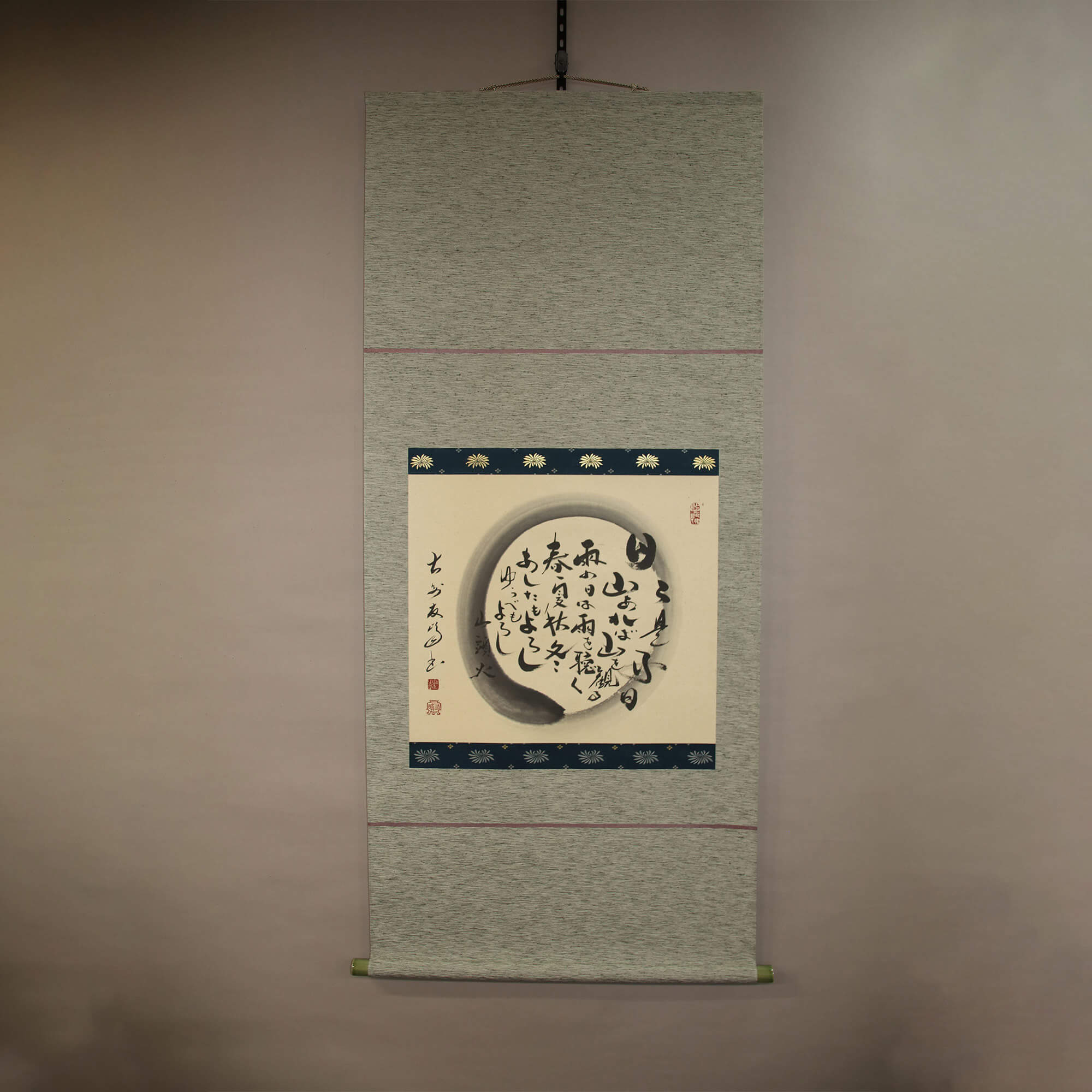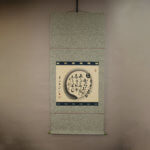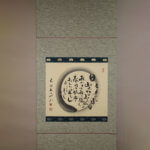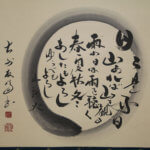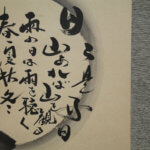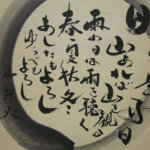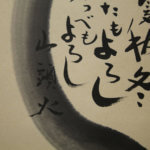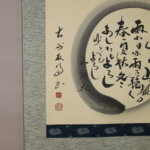Products Lineup
News / Blog
Other Menus
Kakejiku Hanging Scroll: Calligraphy: Every Single Day Is Wonderful & Santōka / Takahashi Yūhō - Hibikorekōjitsu & Santōka
- Product ID
- 0254
- Name
- Takahashi Yūhō
- Profile
The chief priest at the Daianzen-ji temple in Fukui pref.
1948
Born in Fukui city, Japan
1970
Graduated from the Kyoto Hanazono University (Major: Buddhism)
Joined and practiced asceticism at the Kaisei-ji temple in Hyogo for 6 years1989
Appointed as the chief priest at the Daianzen-ji temple in Fukui
2008
Exhibition at the Takumi museum in JR Gifu Station
Exhibition at the art gallery in Inoue department in Nagano2011
Opened a gallery in the Daianzen-ji temple
Also appointed as the chief priest at the Housyou-ji temple in Ishikawa
Exhibition at the “Gallery Metanoia” in Paris, France2014
Performed at the Sarah Lawrence College in NY, USA
- Size
- 690mm x 1440mm
- Roller End Material
- Ceramic
- Material of the Work
- Japanese paper
- Price
- JPY 80,000
- Stock Condition
- In stock
- Payment: Click the Paypal Mark
- Duty and Taxes
Import duty and taxes are beyond our control and may apply to your shipment. Please noted that these fees are the responsibility of the buyer.
- Description
Taneda Santōka (1882-1940) was a haiku poet. He was born in Yamaguchi Pref. He was born the eldest son of a landowner to be a monk after the family of his birth went bankrupt. He traveled around the country, leaving behind many free verse haiku.
This work features such Taneda Santōka’s haiku written by modern Zen monk Takahashi Yūhō, renowned as an expert calligrapher. The haiku reads as below.
“Whenever I see a mountain in front of me, I just look at the mountain. Whenever it is rainy, I just listen to the sound of the rain. If you can accept things with that kind of mindlessness, you will always have the best moments from morning to night throughout the year, spring, summer, fall, and winter.”
Takahashi Yūhō added the Zen phrase “Hibikorekōjutsu (Every Single Day Is Wonderful.)” next to this haiku, which indicates the haiku’s meaning. Drawing a circle in their background then gives the whole work a sense of unity. A circle is called “ensō (circularity)” in the world of Zen to be thought to symbolize “Satori (enlightenment).” This is because the continuous flowing movement of the circle, which has no beginning and no end and is never caught in a corner, has been understood as representing the Buddhist teaching of a mind free of captivity and free from attachment.
This is a very prestigious work, interspersing with essences that allude to the state of enlightenment in Buddhism.

